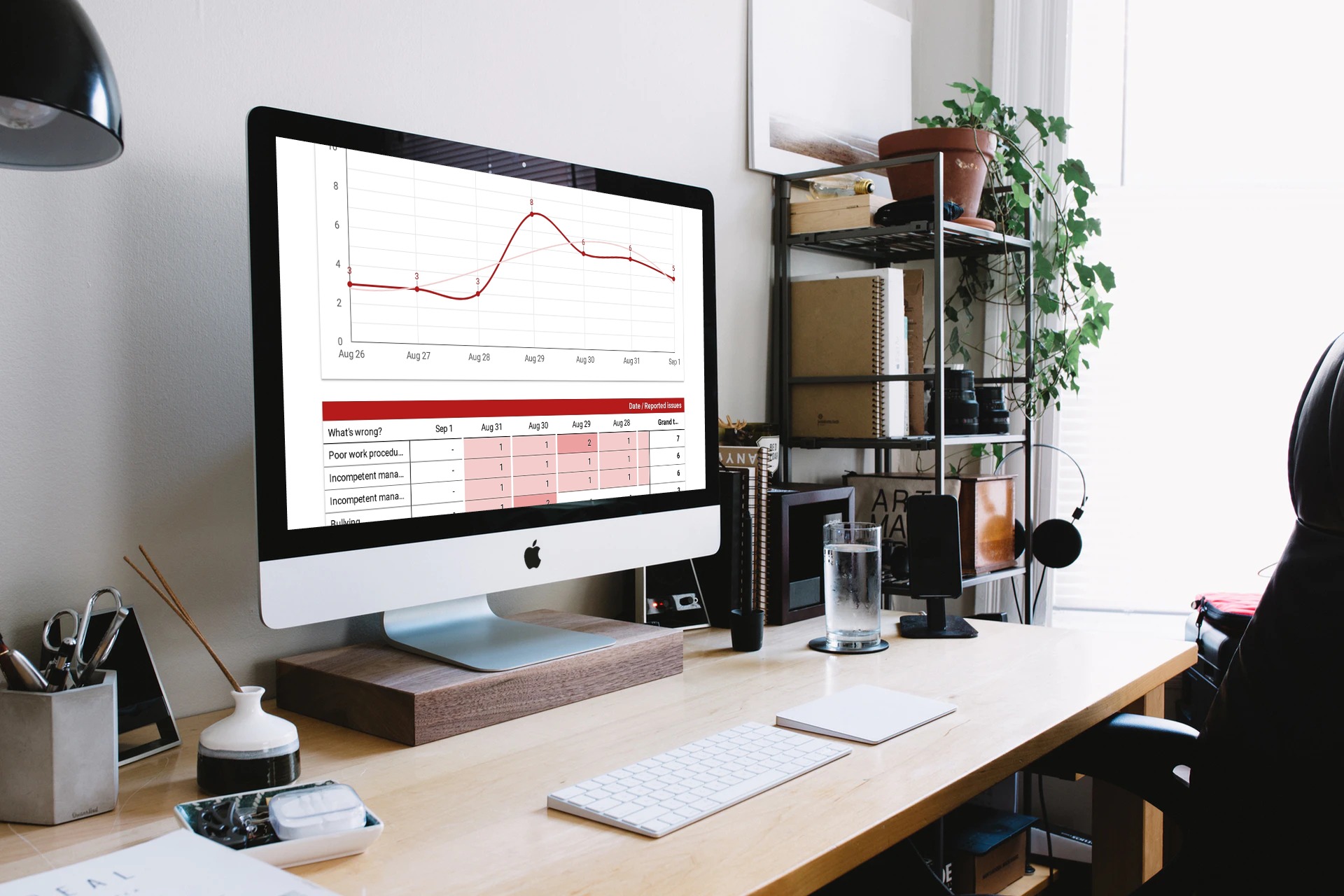While most companies have already embraced business analytics practices to improve the financial output of their commercial activities. A data-driven approach to understand and manage employee engagement is still missing in most small and mid-sized companies.
Employee satisfaction can improve the bottom line of any business by boosting productivity, retaining top talents and reducing recruitment costs. While progressive company giants like Google or Facebook have managed to pioneer new work environments, most small and mid-size companies still did not figure out how to create engaging office cultures.
Key components of employee satisfaction
According to recent studies, conducted by Decision Metrics, in over 80% of small and mid-size businesses, the management does not know why their employees leave and are not aware of how their teams feel at work. At the same time, over 70% of employees interviewed in the same segment has responded that they are not happy with their workplace environment.
Based on over 2,500 responses, how an individual feels at work can be broken down to four key components:
- Mood
- Productivity
- Colleague relations
- Management relations
Data collection
During the 2010s, even small companies have developed techniques and procedures to collect and analyse business data to be able to measure and optimize their business. For many reasons, especially due to lack of interest and priority, the optimization of workplace environments did not develop so much.
Today, it is particularly difficult for a company to collect regular feedback regarding mood, productivity, colleagues and management relations from employees, mostly because there are no available tools to do so.
Team Analytics does exactly the above. The simple yet powerful tool enables employees to provide quantitative daily feedback, rating their mood, productivity and relations with other people in the department. The collected information is saved in databases and insights are displayed on department dashboards.
The tool is designed to monitor office vibes, detect and track issues in the monitored departments, such as conflicts with management, lack of adequate leadership, bullying and further problems that might occur.
Taking a data-driven approach to developing a better work environment
Based on insights and quantitative evaluation of employee satisfaction, it is easy to make data-dased decisions to improve the office environment.
Addressing reported issues is an ideal first step, followed by investigating further about repeatedly occurring management issues.
Tracking mood, productivity and the quality of relationships between colleagues can provide valuable information to see how a department could be improved. For example, a sudden drop in productivity after hiring a new manager is a clear indication of leadership issues, while a sudden increase in productivity alongside increased mood is a great sign of capable management.
Such systems are capable to identify problem people, problematic managers as well as other factors that are having a negative impact on the daily work of departments.
These kinds of information would be very difficult to collect and quantify without dedicated tools, probably that is one reason why most small and mid-sized companies have not improved in this aspect compared to technologically more advanced companies.


